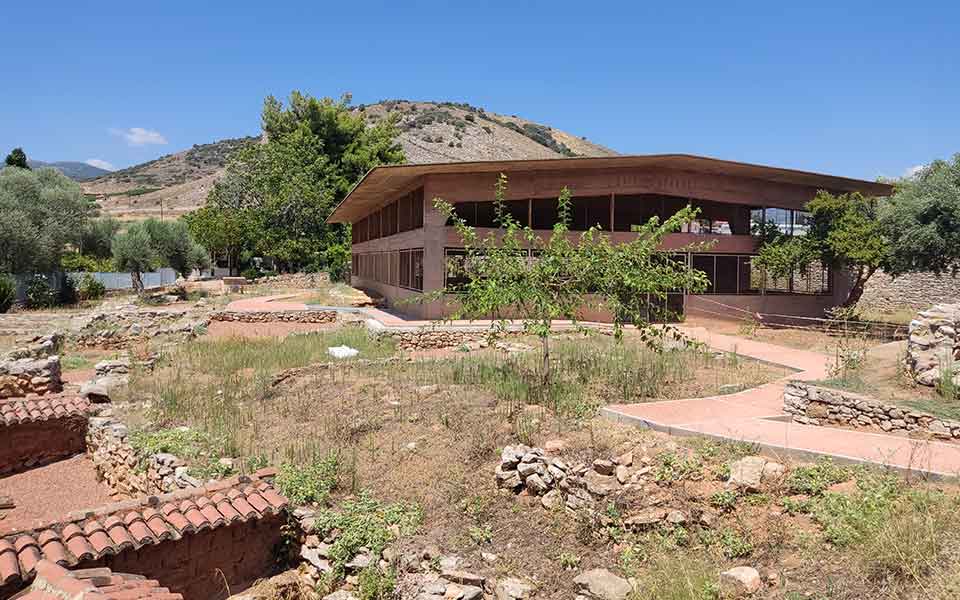The archaeological site of Lerna, nestled in the northeast Peloponnese, 10km south of Argos, is a place of immense importance, shedding light on the complex tapestry of Greece’s Neolithic (from c. 6,500 BC) and Bronze Age (Helladic – c.3200-c.1050 BC) past.
Reverberating with myths and legends, most famously of the terrifying multi-headed Lernaean Hydra, the second of Heracles’ “Twelve Labors,” Lerna has captured the imagination of scholars and enthusiasts over the years, but, like so many smaller, lesser-known archaeological sites in Greece, it is all-too-often overlooked by visitors to this well-traveled corner of the Peloponnese.
Here, we provide a short guide to this impressive site, which is located on the coast road between Argos and Nafplio, on the outskirts of the modern village of Myloi.
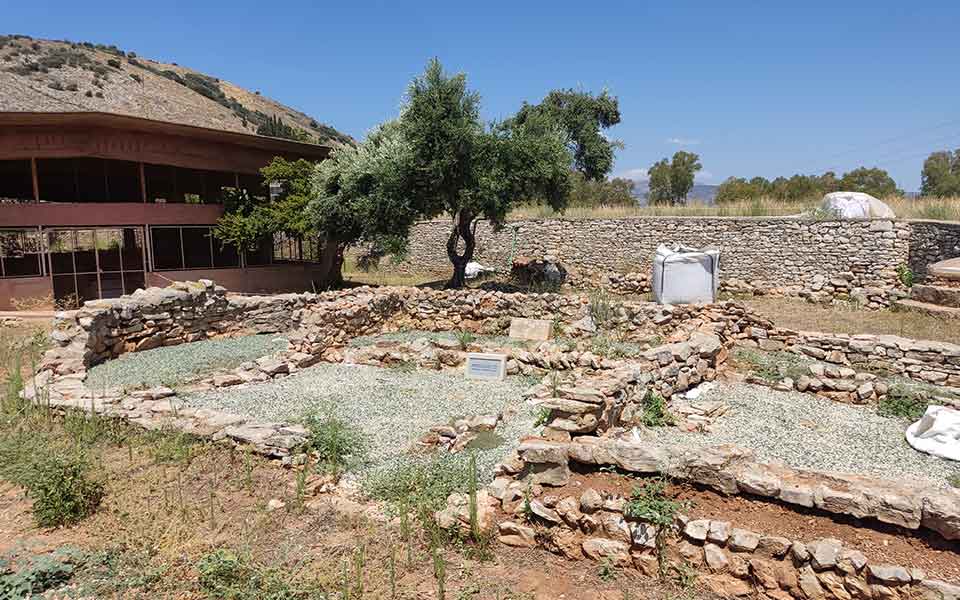
© Duncan Howitt-Marshall
Over 5,000 Years of Inhabitation
Investigations in the 1950s by American archaeologist John L. Caskey of the University of Cincinnati, with the support of the Greek Archaeological Service and the American School of Classical Studies at Athens (ASCSA), revealed seven distinct habitation / chronological phases at Lerna (I-VII), spanning, with few interruptions, over a period of 5,500 years (mid-7th to 1st millennium BC).
The site was first settled during the Early Neolithic period (c. 6500-5800 BC: Lerna I) by a small group of farmers, who cultivated founder crops (emmer and einkorn wheat, and barley), engaged in animal herding and fishing, and produced handmade pottery. The settlement gradually expanded in the Middle Neolithic period (c. 5800-5300 BC: Lerna II), with rectangular houses with stone foundations. Increasing quantities of pottery, including finely-made conical vases and figurines, indicate the site was becoming more prosperous. An example of a small house with interior divisions can be seen in the deepest stratigraphic levels of the settlement, located near the site’s entrance.
Lerna may have been abandoned during the final stages of the Neolithic, but was reoccupied, initially on a seasonal basis, in the Early Helladic period (3100-2750 BC), at the start of the Bronze Age. It was during the subsequent Early Helladic II phase (c. 2750/2700-2300/2200 BC: Lerna III) that the settlement, now permanently occupied, became a flourishing cultural center for the wider region of the Argolid. There were at least four building phases during this time, including an extensive fortification wall that ran around the perimeter of the settlement, and a massive, two-story building dubbed by Caskey and his team as the “House of Tiles.”
During this time, the inhabitants produced distinctive looking ceramic vessels dubbed “sauceboats,” noted for their upward curved spouts.
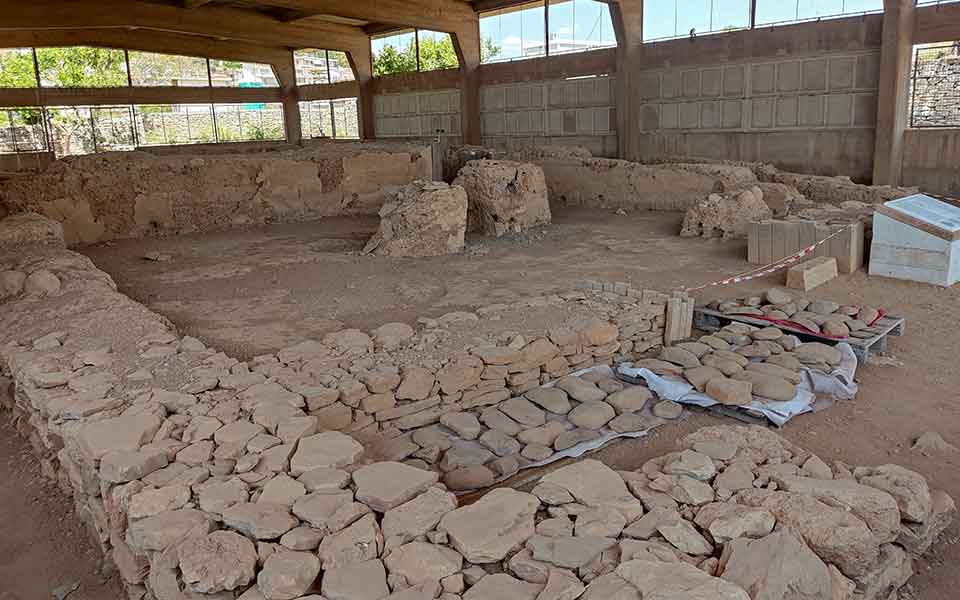
© Duncan Howitt-Marshall
The House of Tiles
Preserved under a large, modern shelter, the House of Tiles is a remarkable archaeological find, offering a fascinating glimpse into the architectural and domestic aspects of Early Helladic II or “Kouakou culture” in Bronze Age Greece.
The monumental building, approximately 12 x 25 meters in dimension, consists of multiple interconnected rooms, which likely served different functions within the household. These rooms could have been living areas, storage spaces, workshops, or perhaps even areas for communal activities. The layout of the unusually large building provides clues about the social dynamics and daily activities of the people who inhabited it. Archaeologists refer to this type of building as the “corridor house” type.
The two-story building had a stone wall foundations (“socle”), 90cm in width, a superstructure of sun-dried mud-bricks, stuccoed walls, a stairway leading to the second floor (still visible today), and clay (terracotta) roof tiles, thousands of which were well preserved in a destruction layer unearthed at ground level – hence the name of the building. Among the portable artifacts found during its excavation, more than 150 clay sealings bearing the impressions of some 60 seals were discovered in two small rooms on the south side of the building – testament to some early form of centalized, urban authority.
Caskey speculated that the building may have been used as a communal structure, or as the dwelling of an elite member of the community, a local chieftain or ruler – an early example of a palace. In any event, the building was destroyed by fire, perhaps as the result of an attack by enemy raiders, sometime around 2200 BC.
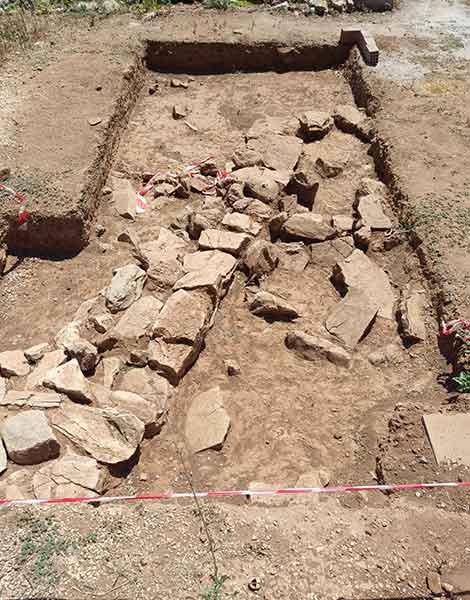
© Duncan Howitt-Marshall
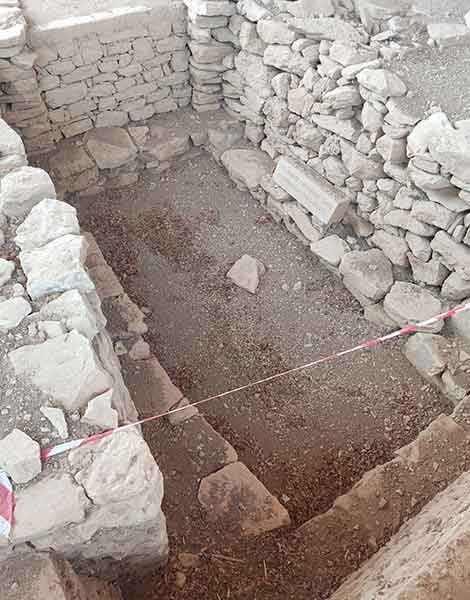
© Duncan Howitt-Marshall
Following the destruction of the House of Tiles, the ruins were covered over by a large earthen tumulus (burial mound), 19m in diameter, with a stone enclosure – one of the largest prehistoric tumuli ever discovered in Greece. The excavators note that it was not used as a burial site, instead the tumulus was constructed as a mark of respect for (or fear of?) the inhabitants’ predecessors. During this time, the Early Helladic III period (late 3rd millennium BC: Lerna IV), the site continued to flourish, and significant changes appear in the architectural layout of the settlement, including the construction of large, stone-built apsidal houses. For the first time, wheel-made pottery, an imported technique from the eastern Aegean, appears at the settlement, including so-called “Minyan ware,” a type of jar that is often associated with the site of Troy, on the other side of the Aegean.
Lerna prospered well into the Middle Helladic period (c. 2050/2000-1700/1675 BC: Lerna V), as seaborne trade developed with the nearby Cycladic islands and with Crete. Apsidal and rectangular-built stone houses were built with large storage areas, and separated by narrow lanes. The inhabitants also begin a new custom of burying their dead inside the settlement, primarily in cist graves.
At the start of the Late Bronze Age (1700/1675-1600 BC: Lerna VI), the dead were buried in a large, rectangular shaft graves, similar to those found at nearby Mycenae. Two such graves can be clearly seen today, cut into the ruins of the House of Tiles. Inhabitation of Lerna continued through the Mycenaean Palatial period of the 14th and 13th centuries BC (Lerna VII), perhaps as a satellite of its larger and more powerful neighbor Argos. The site was abandoned at the end of the Bronze Age.
The finds from the Lerna excavations are on display in the newly refurbished Archaeological Museum of Argos.
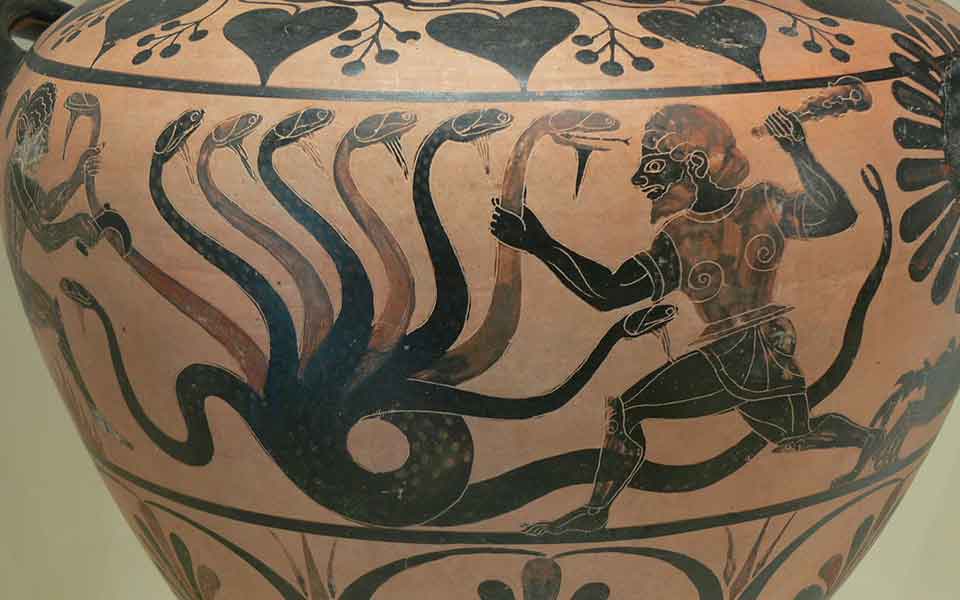
© Public domain
A Bottomless Lake
Throughout antiquity, the area surrounding the settlement at Lerna was an intricate network of wetlands and a now drained, freshwater lake, and was believed to be the lair of of the fearsome Lernaean Hydra, a serpent-like creature with multiple heads (the most popular versions of the myth depict nine). During the settlement’s heyday in the Early Bronze Age, geologists believe the lake had a diameter of nearly 5km, but gradual silting and malaria resulted in the marsh being drained in the 19th century.
According to the ancient myth, the hero and demigod Heracles, as the second of his Twelve Labors, was tasked with killing the Hydra. He enlisted the help of his nephew Iolaus, who cauterized the neck stumps of the Hydra’s heads with fire to prevent them from regrowing. As Heracles defeated the Hydra, he dipped his arrows in its poisonous blood, which would later prove to be both a boon and a curse in his subsequent adventures.
The ancient Greeks also believed that Lake Lerna was one of the entrances to the Underworld, and the Hydra its gatekeeper. The Greek geographer Pausanias, writing in the 2nd century AD, described the lake as bottomless – “There is no limit to the depth of the Alcyonian Lake” [Pausanias, 2.37.4.] – and that sacred rites in honor of the goddess Demeter were performed in the vicinity – the Lernaean Mysteries.

